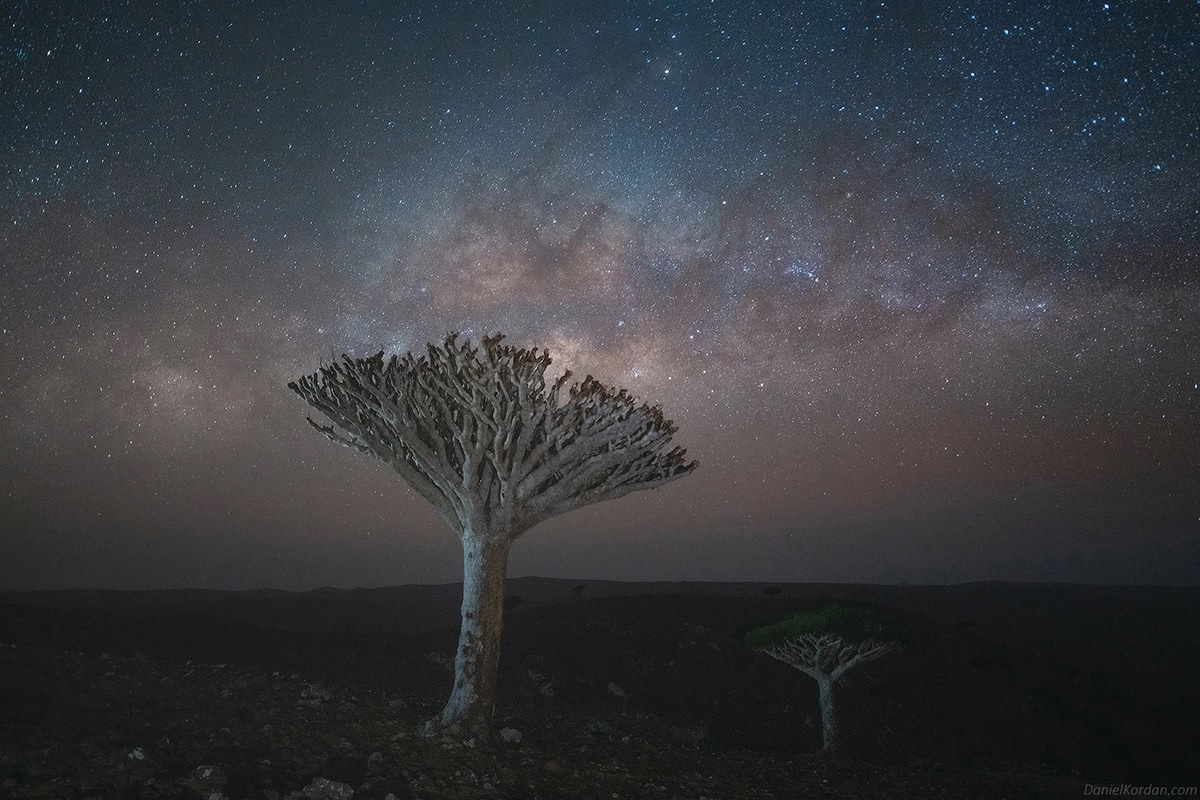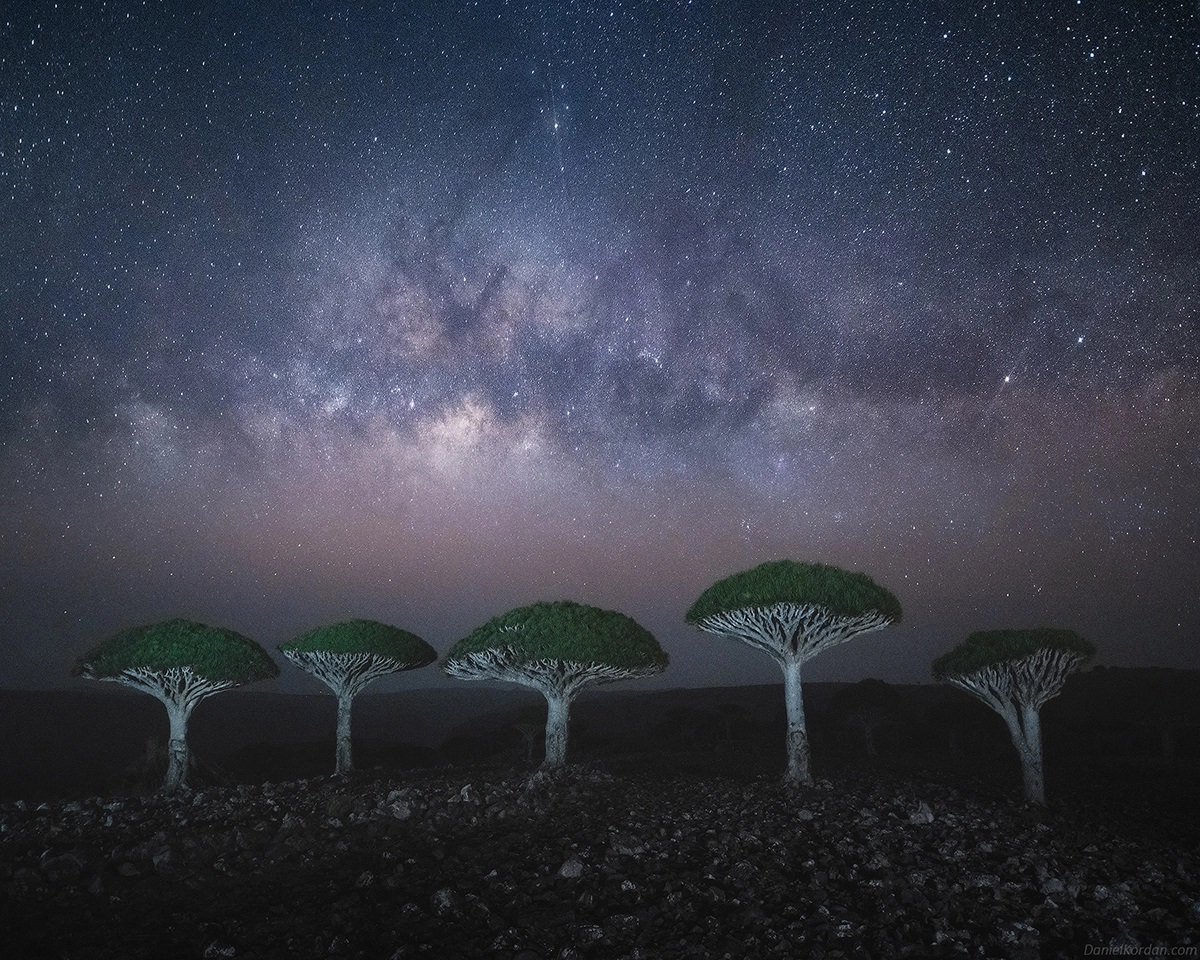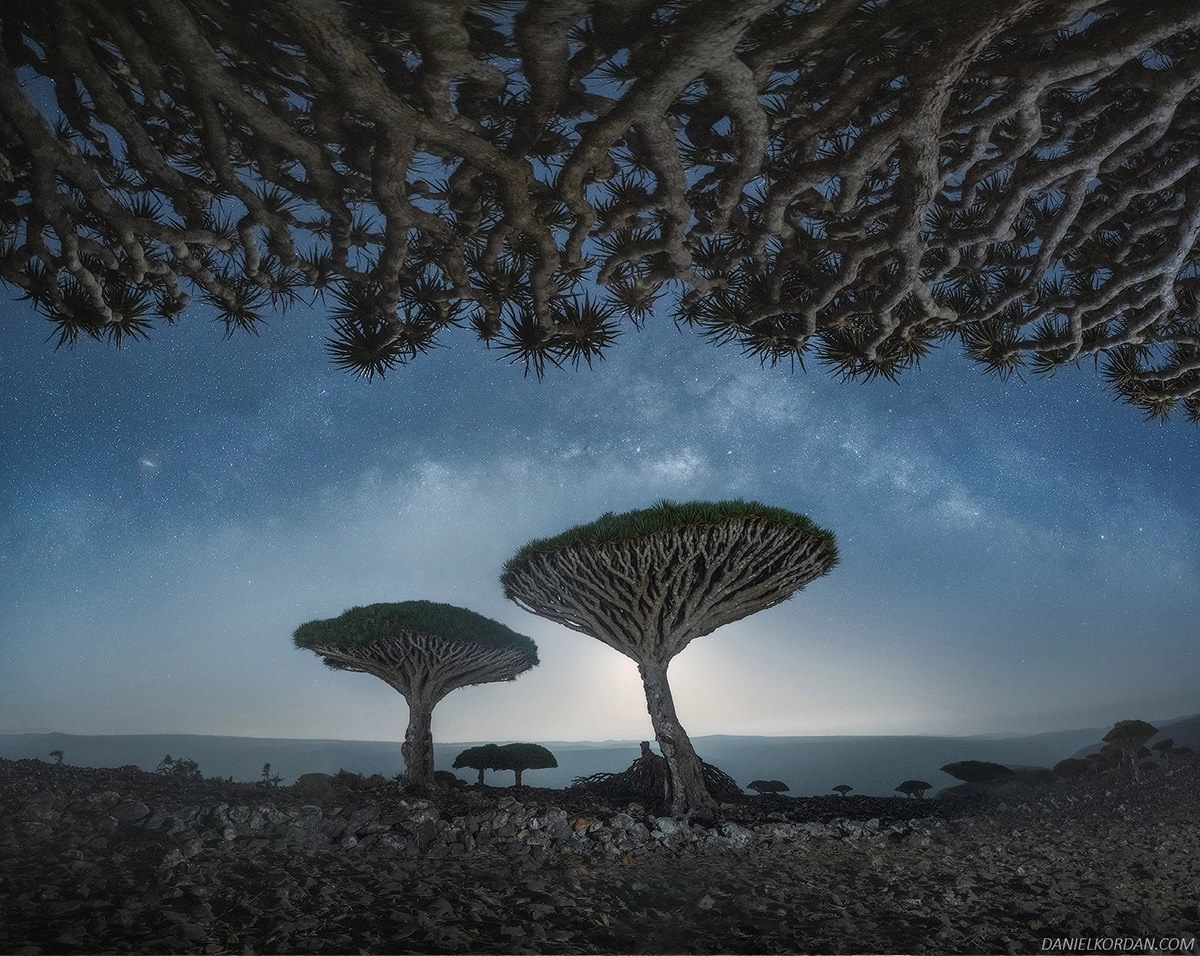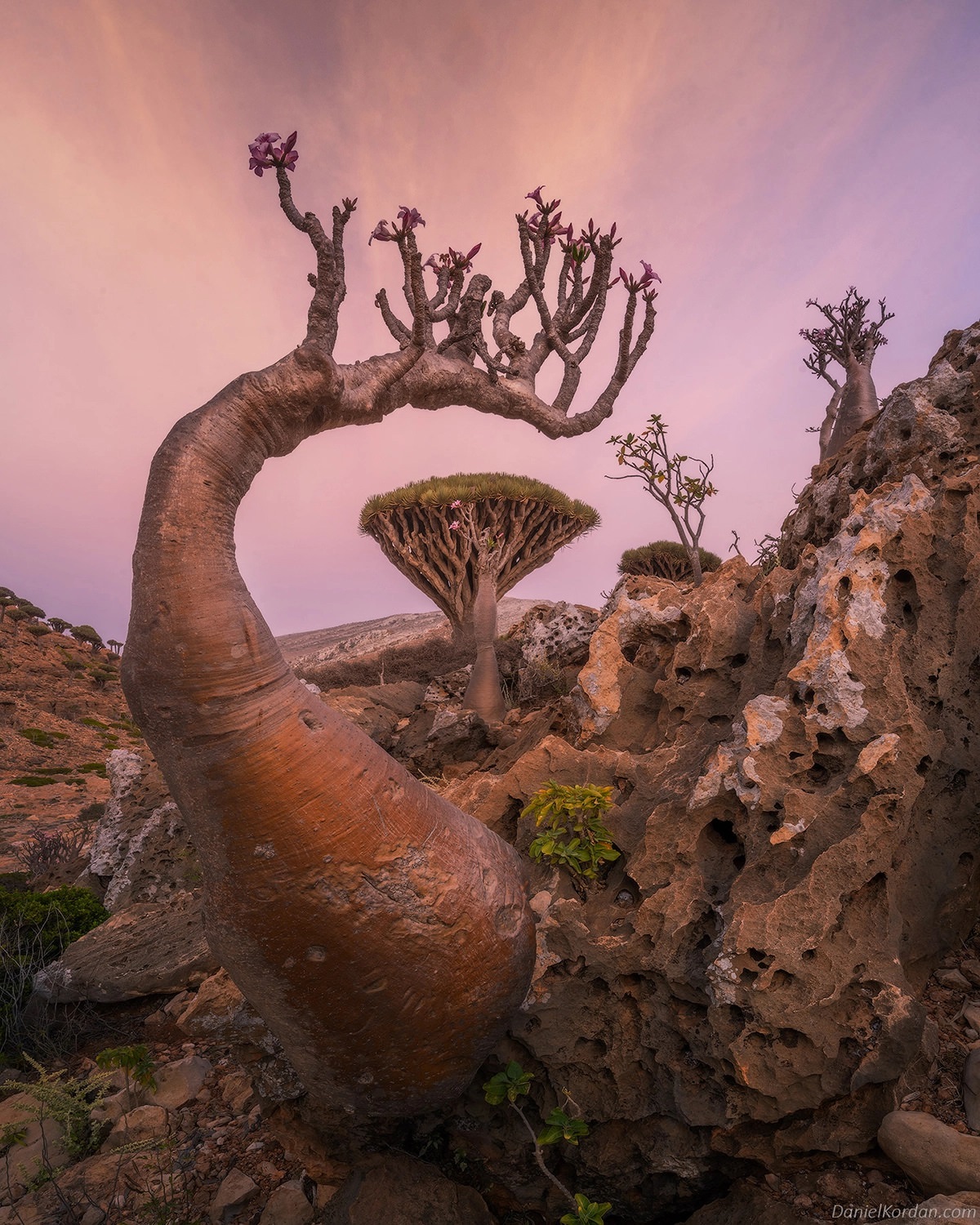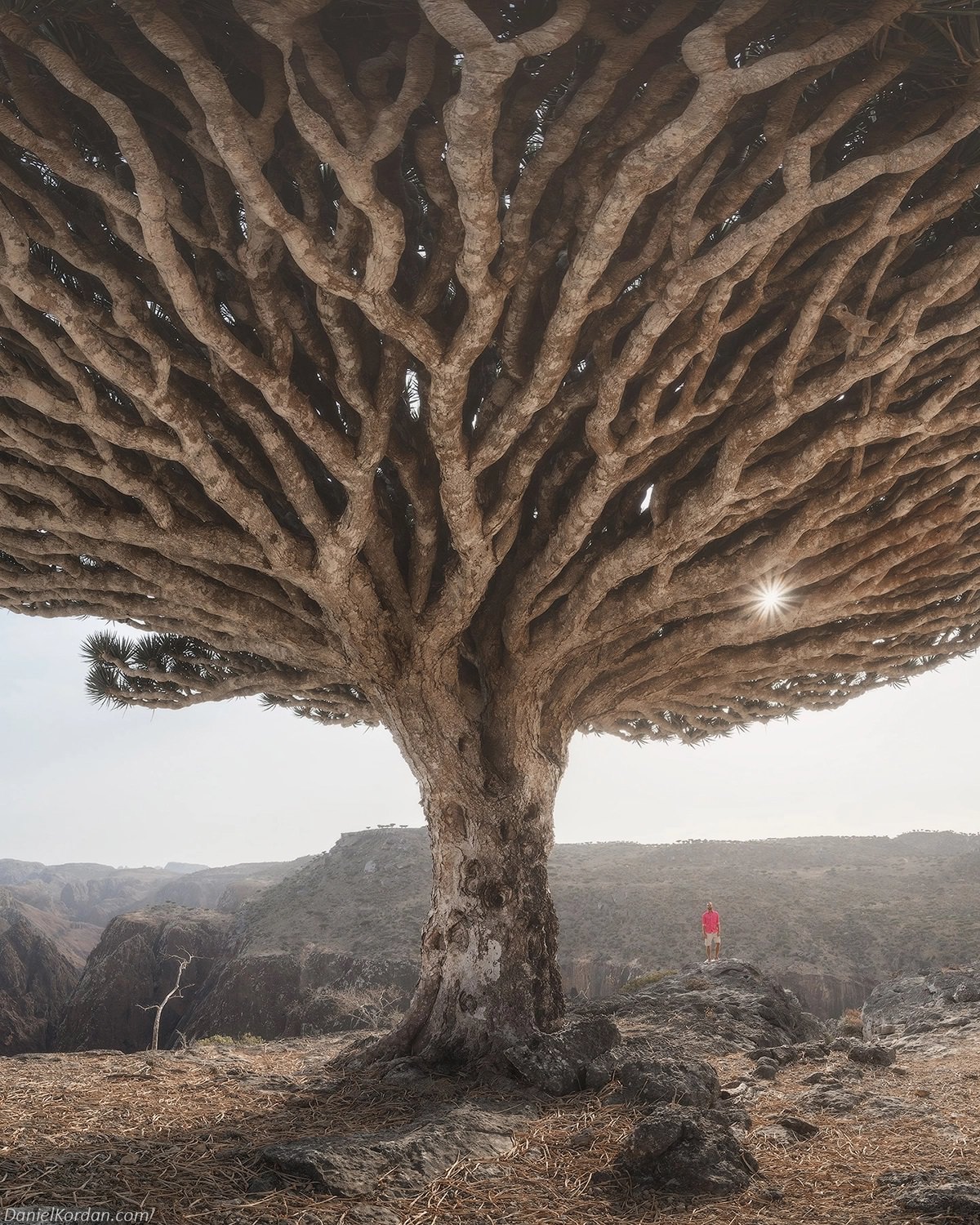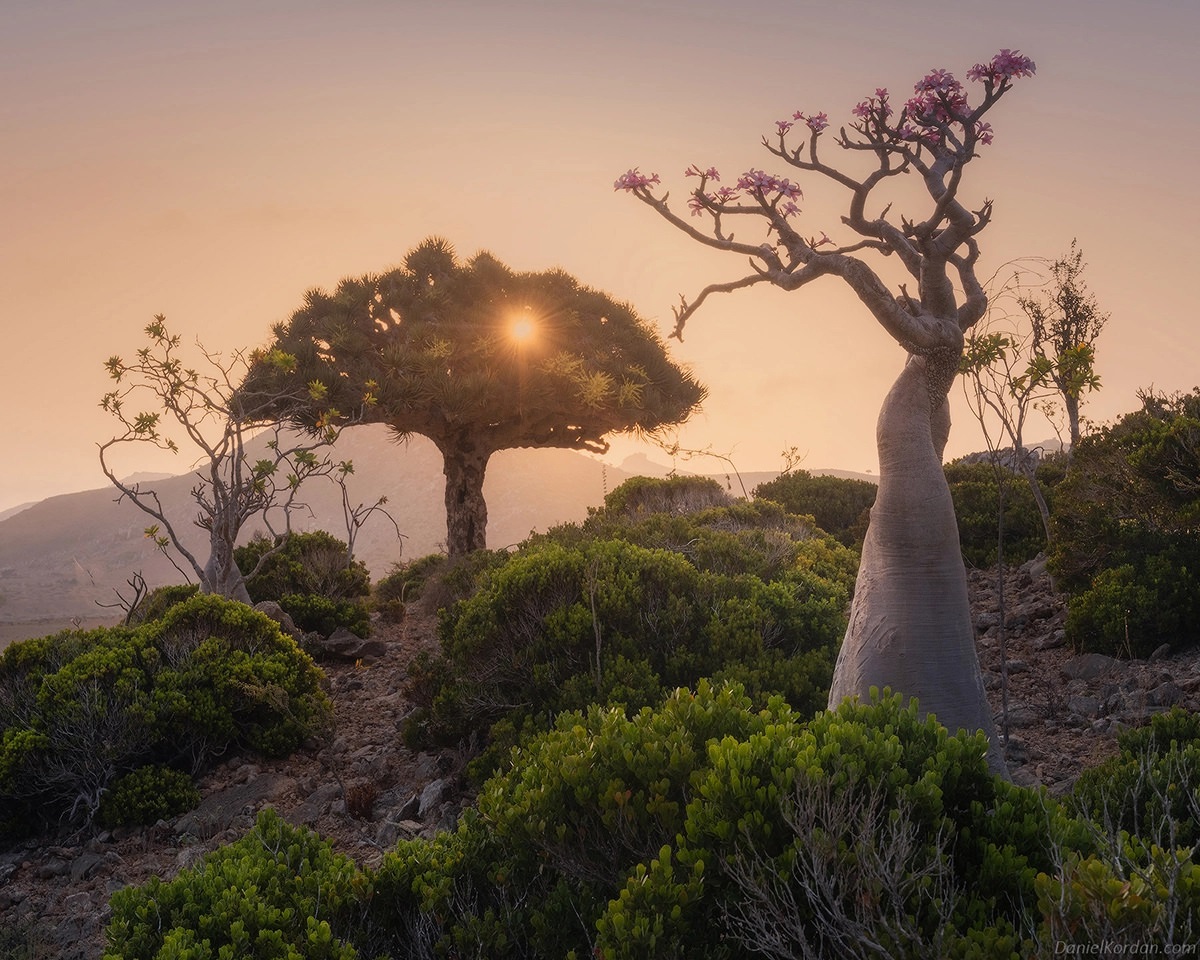The dragon blood tree is native to the Socotra archipelago in Yemen, located in the Arabian Sea. In the northwest Indian Ocean, there is a group of four islands known as the Socotra Archipelago. UNESCO has designated the islands as a World Heritage Site. Drangon trees are also known as Dracaena cinnabari or the Socotra dragon tree. Its shape resembles an upright umbrella with an upturned, densely-packed crown. There are between one and four seeds in its fruits. As they mature, they turn from green to black and then orange when ripe.
Flower and fruits of dragon blood tree
The dragon’s blood tree usually blooms around March, though flowering times may vary depending on location. Most of the flowers grow at the ends of the branches. There are inflorescences and small clusters of fragrant, green or white flowers on these plants. It takes five months for the fruits to fully mature. As the berries ripen, they gradually become black and change from green to black. One to three seeds are found in the fleshy berry fruit. The fruit is orange-red and has a pulpy consistency. Birds and other animals are usually responsible for dispersing the berries. Dragon’s blood trees are adapted for survival in arid conditions with little soil, such as those found on mountaintops. The large, dense crown provides shade and reduces evaporation. Moreover, this shade helps seedlings grow under the adult tree, which accounts for why the trees grow closer together.
Threats to dragon blood trees
Despite most of its ecological habitats still being intact, tourism and industrial development have increased. The process of logging, overgrazing, woodcutting and development plans puts more pressure on the vegetation. Due to the development of its habitats, the dragon’s blood tree has become fragmented despite its ubiquitous distribution. Its population is suffering from poor regeneration. Overgrazing and feeding the plants and fruits to livestock on the island have severely reduced the dragon’s blood population. Its resin is harvested for use in resin products, and its leaves are used in rope making. Beehives are currently made from some dragon’s blood trees. A breakdown in the island’s traditional practices has threatened this species, which was generally prohibited.
Benefits of Dragon blood tree
Stimulants and abortifacients are contained in the dragon’s blood tree. Gum-resin, produced by the root, is used in toothpaste, gargle water, and throat drops as stimulants. The root is used to treat rheumatism, while the leaves are carminative. In ancient times, the dragon’s blood resin, which is still highly prized today, was extracted from the trees. Socotrans use it decoratively, to dye wool, glue pottery, for mouth freshener, for lipstick, as well as a dye and medicine in the Mediterranean basin. According to ancient beliefs, the dragon’s blood tree is also used in alchemy and ritual magic.
Award-winning Russian Landscape photographer Daniel Kordan captured the majestic beauty of Dragon’s Blood Tree of Socotra.



